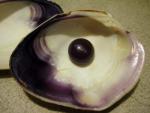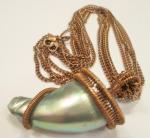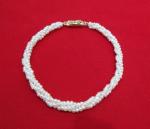Parasitic Leeches Present A New Threat To Endangered Mussels
Freshwater mussels have long been used by humans as decorations, tools, and for food. Ancient Europeans used freshwater mussel shells as ornaments. Ancient Mayans used the shells as paint pots, pendants, and clothing decorations. The mound-building tribes of the the American Midwest gathered freshwater mussels for food, the tempering of pottery, and for making tools.
North American freshwater mussels were first recognized for their commercial value in the 1800s by the American button industry. The mussel’s pearly shell was used for buttons while the meaty interior was used in livestock feed. By 1912 there were nearly 200 button factories across the country making over one billion buttons a year. The industrial use of these mussel shells, coupled with the simultaneous degradation of their freshwater habitats due to rapid industrialization, led to major declines in freshwater mussel populations.
Then, in the 1900s, the Japanese discovered a new market for freshwater mussel shells - as a source material for cultured pearls. Freshwater mussel shells were cut and finished into beads, then inserted into oysters to start the pearl-making process. Even today, thousands of tons of mussel shells are exported to China and Japan each year to support the pearl-making industry.
Beyond their marketable functions, mussels also have important environmental roles. Like other bivalves, mussels are filter feeders. For food, mussels pull microscopic phytoplankton out of the passing water. Through this filter feeding process, mussels also collect suspended particles and pollutants from the surrounding water, thereby cleaning up the water column.
Read entire article here:
https://www.forbes.com/sites/allenelizabeth/2019/12/28/parasitic-leeches-present-a-new-threat-to-endangered-mussels/#5ac78b3550a3
Join in and write your own page! It's easy to do. How? Simply click here to return to Mollusc News.



